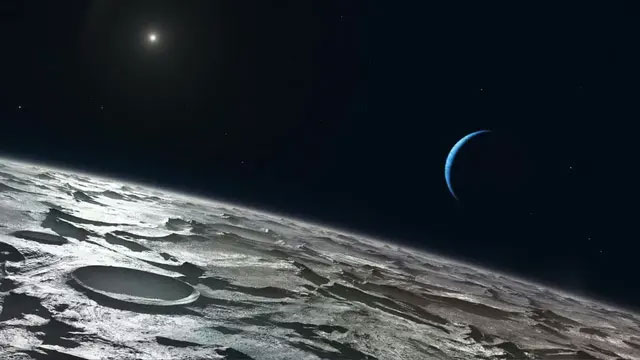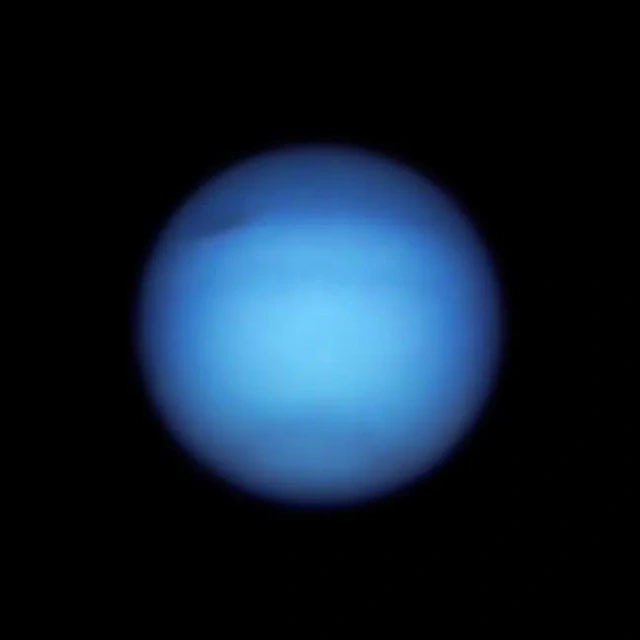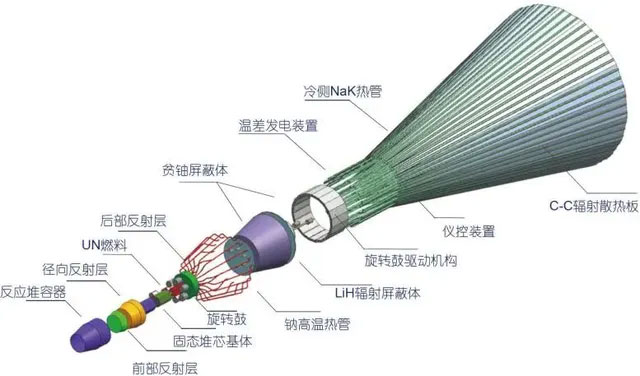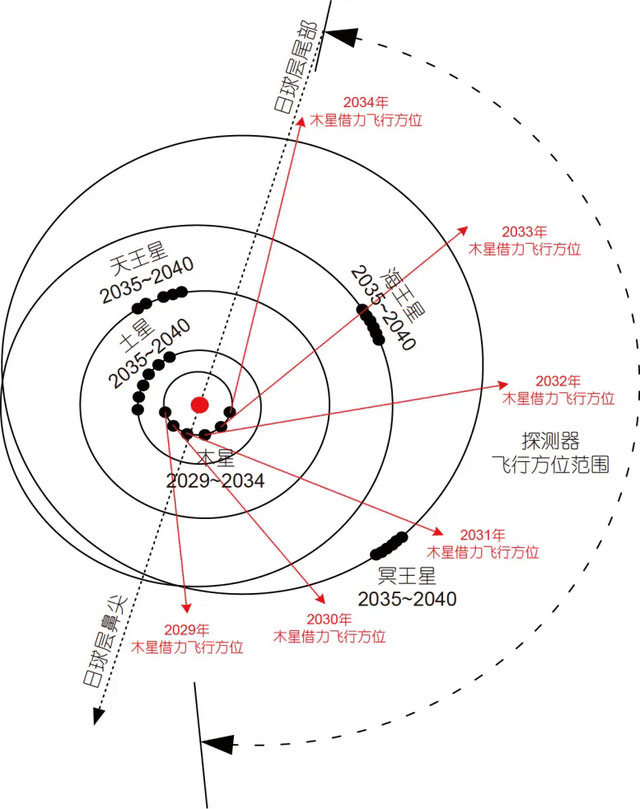In the coming decade (2023-2032), NASA will undertake several space missions within our Solar System, including advancing towards the orbit and exploration of Uranus. This mission will involve studying the planet’s internal structure, atmosphere, magnetosphere, and rings. Concurrently, NASA plans to send a probe to the orbit of Enceladus – the sixth-largest moon of Saturn – and a lander to investigate the active gas plumes emanating from the southern polar region of Enceladus.

Enceladus is the sixth-largest moon of Saturn, discovered by astronomer William Herschel in 1789. Before 1980, little was known about Enceladus other than the presence of water on its surface. Enceladus has a diameter of about 500 km, which is one-tenth the size of Titan, Saturn’s largest moon.
Not to be outdone, China is also planning to develop a Neptune Explorer powered by nuclear energy, aimed at exploring the giant ice planet in our Solar System (Neptune) and its largest moon (Triton), along with the planet’s rings and other moons.
In fact, this mission is the subject of a study conducted by researchers from the China National Space Administration (CNSA), the Chinese Academy of Sciences (CAS), the China Atomic Energy Agency, the China Academy of Space Technology, and several universities and research institutes. The article detailing their findings (published in the journal Scientia Sinica Technologica) is led by Guobin Yu, a researcher at the School of Astronautics at Beihang University and the Department of Science and Technology Quality at CNSA.
Indeed, giant ice planets like Neptune are a treasure trove of potential scientific exploration, as the authors describe in their paper. Besides its intriguing internal structure (including diamond rain), Neptune is believed to have played a significant role in the formation of the Solar System. In summary, its composition includes a large amount of gas that is part of the protoplanetary nebula from which our Solar System formed. At the same time, its position may provide insights into where planets formed (and the processes they underwent to reach their current orbits).
There are also ongoing mysteries regarding Neptune’s largest moon – Triton. Astronomers suspect that it may have originated from an external Solar System and was later captured by Neptune’s gravitational pull.
The presence of this moon is believed to have caused certain impacts on Neptune’s natural satellites, leading them to break apart and reassemble into new moons. It is also hypothesized that Triton will eventually break apart and form a ring around Neptune or collide with it. Essentially, studying Neptune, its moons, and its orbital dynamics could provide answers about how our Solar System formed, evolved, and how life began.
However, due to the challenges of sending missions into deep space (including launch windows, power supply, and communication), only one mission has visited Neptune so far – the Voyager 2 probe, which flew past Neptune in 1989 and has provided us with most of the current knowledge about this ice giant and its system.
Furthermore, the nature of Voyager 2’s scientific instruments has imposed certain limitations on the amount of data it could collect. In recent years, NASA has proposed sending a mission to explore Neptune and Triton. However, this mission has not been prioritized in the coming decade and has been handed over to the Uranus Orbiter and Probe (UOP) project.
With the significant advancements made in spacecraft technology since Neptune was last visited, scientists in China believe it is time to conduct another mission to Neptune.
When combined with NASA’s Uranus exploration project, the data obtained from these missions will keep astronomers and planetary scientists busy for decades and may reveal some truly groundbreaking insights into the outer Solar System – at least its history.

In 2021, the Hubble Space Telescope observed Neptune and discovered that a newly identified “dark spot” storm from 2018 had reversed direction and was moving northward.
Design
Of course, the aforementioned challenges remain. Regarding power supply issues, Guobin Yu and his colleagues require a source that can safely and reliably provide power for 15 years. They determined that a radioisotope thermoelectric generator (RTG) with a power output of 10 kilowatts (kWe) would suffice. This type of nuclear battery is similar to the one used by the Curiosity and Perseverance rovers, converting thermal energy from radioactive decay into electrical energy. As they state in their report:
“Considering the technical maturity of power supplies for space reactors at various power levels, the energy requirements of the probe and electric motors, the launch vehicle’s capabilities, and budget constraints, the power output of the space reactor power supply for the Neptune exploration mission is determined to be 10 kWe.”
They further recommend that the power supply system be based on a scheme using a thermal conduit, a thermoelectric converter, and a radiator as a power generation unit. Onboard, they will design multiple such power generation units, which will then be connected in parallel to power the spacecraft.
They write that this system will be capable of providing the mission with “8 years of operation at maximum power of 10 kWe and 7 years of operation at low power of 2 kWe, ensuring the reliability and safety of the system throughout the mission.”

Schematic of a 10 kW thermal tube reactor and power supply for the thermoelectric space reactor.
The team also identified several key processes necessary for the safe and reliable operation of this system. Among them, the generator must ensure continuous heat generation and can be controlled from the nuclear fission process, effectively transferring heat within the reactor and efficiently converting it into electricity while dissipating waste heat. To achieve this, their reactor design requires Uranium-235 rods, solid uranium-molybdenum alloys, and ceramic rod elements that allow for high-efficiency heat transfer with a compact, lightweight core.
The spacecraft will also carry several instruments to study the planet, its system, and objects along the way. This includes an Atmospheric Probe for Neptune (NAP) to investigate the interior of the planet and a Triton Penetrating Probe (TPP) that will examine the moon’s crust. Several smaller satellites (CubeSats or nanos) will also be deployed on the way to explore the Main Belt asteroids and Centaur asteroids.
Mission Profile
To start, the research team explored several feasible methods for exploring Neptune (remote sensing, flybys, orbital observations, soft landings, etc.). Remote sensing and flybys were immediately ruled out as they would not allow the mission to effectively measure the deep composition and internal structure of Neptune. They stated: “The requirements are very high, and the mission’s scale, technical difficulty, and budget are extremely large. Based on the scientific objectives, technical proficiency, and budget scale, the detection method was determined to be extreme orbital detection.”
Another consideration is the relevant distance (an average of 30 AU from the Sun) and the feasibility of a deep space mission, meaning the probe’s speed should be increased as much as possible in the early stages. They further concluded that the best way to achieve this (and to slow down to achieve orbit around Neptune) is to conduct a launch around 2030, as it will then be gravity-assisted by Jupiter, with an arrival date set for 2036. Other launch opportunities include 2028, 2031, and 2034.
After successfully entering orbit, the spacecraft will deploy a series of small satellites and two probes to explore Neptune’s atmosphere and Triton’s surface.

The Chinese space agency has made some quite impressive moves in recent years, showcasing how the country has become a space power. These include the development of heavy-lift launch vehicles such as the Long March 9, the deployment of space stations (the Tiangong program), and their successes with the Chang’e and Tianwen programs, which have sent robotic explorers to the Moon and Mars.


















































